Starry-eyed
This is a level 2 number activity from the Figure It Out series. A PDF of the student activity is included.
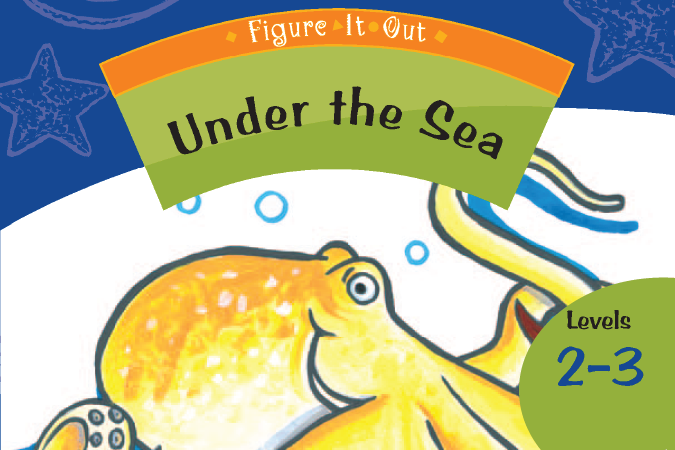
About this resource
Figure It Out is a series of 80 books published between 1999 and 2009 to support teaching and learning in New Zealand classrooms.
This resource provides the teachers’ notes and answers for one activity from the Figure It Out series. A printable PDF of the student activity can be downloaded from the materials that come with this resource.
Specific learning outcomes:
- Solve problems using addition strategies.
Starry-eyed
Achievement objectives
NA2-1: Use simple additive strategies with whole numbers and fractions.
Required materials
- Figure It Out, Level 2-3, Theme: Under the sea, "Starry-eyed", page 10
- a calculator
See Materials that come with this resource to download:
- Starry-eyed activity (.pdf)
Activity
Usually in number problems like this, all the spaces are left blank and you are given a list of the numbers to place. This makes it difficult to complete the number patterns. The problems on this page are more accessible for students because they have been given some line and some positional numbers.
These problems help students to develop systematic thinking. Consider this process for solving problem a:
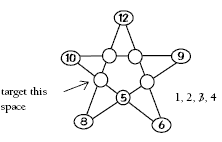
Since 6 + 5 + ? + 10 = 24, the ? number must be 3.
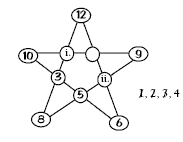
For i., 8 + 3 + ? + 12 = 24, and so ? = 1, and for ii., 8 + 5 + ? + 9 = 24, and so ? = 2.
This leaves 4 to go in the remaining space.
Similar reasoning can be used for problem b:
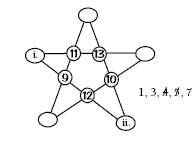
9 + 12 = 21, so the two numbers for spaces i. and ii. must add to 9. Only 4 and 5 do that.
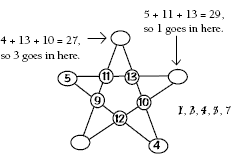
The numbers for the other spaces can be found using the line total.
The side totals of the inside pentagon tell you what each pair of outside numbers must add to.
Another way for students to solve these problems is to write the missing numbers on small pieces of paper or card and put them in different circles to find what works. This trial and error process is cumbersome, but it can be effective. It also provides lots of mental computation practice.
a.
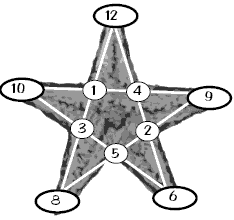
b.
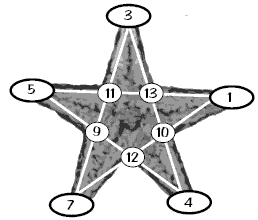
c.
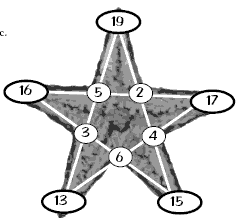
d. Answers will vary.
The quality of the images on this page may vary depending on the device you are using.


